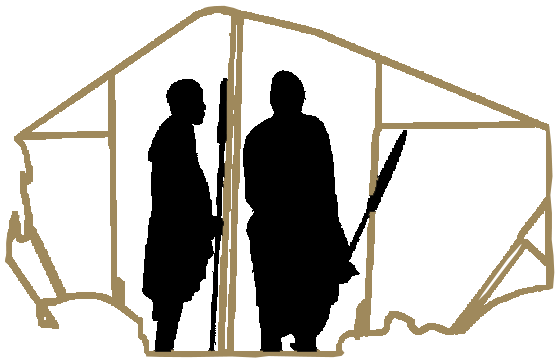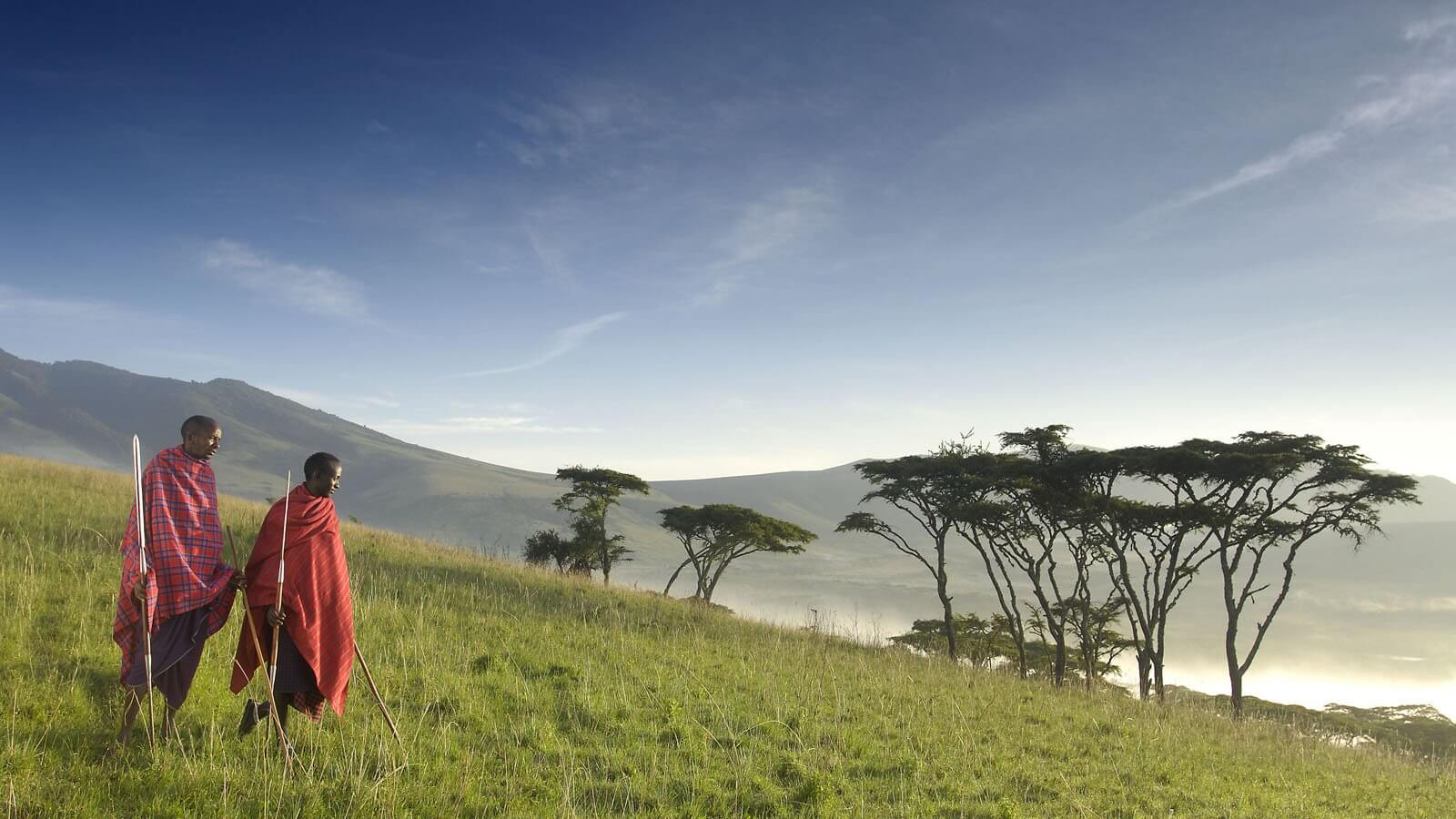Perhaps the most famous tribe in Africa, the Maasai originate from the south of Kenya and the north of Tanzania and have an extraordinary culture. Their unique culture and their customs can be controversial in today’s modern age. They are one of the last great warrior cultures in the world and one of their famous homes was once the Serengeti (taken from the Maasai word “Serengit” meaning endless plains) as well as the Maasai Mara of Kenya. Both these parks are now gazetted at wildlife reserves so unpopulated but the Maasai still have their homesteads on the fringes and through the Ngorongoro highlands.
The Maasai are nomads
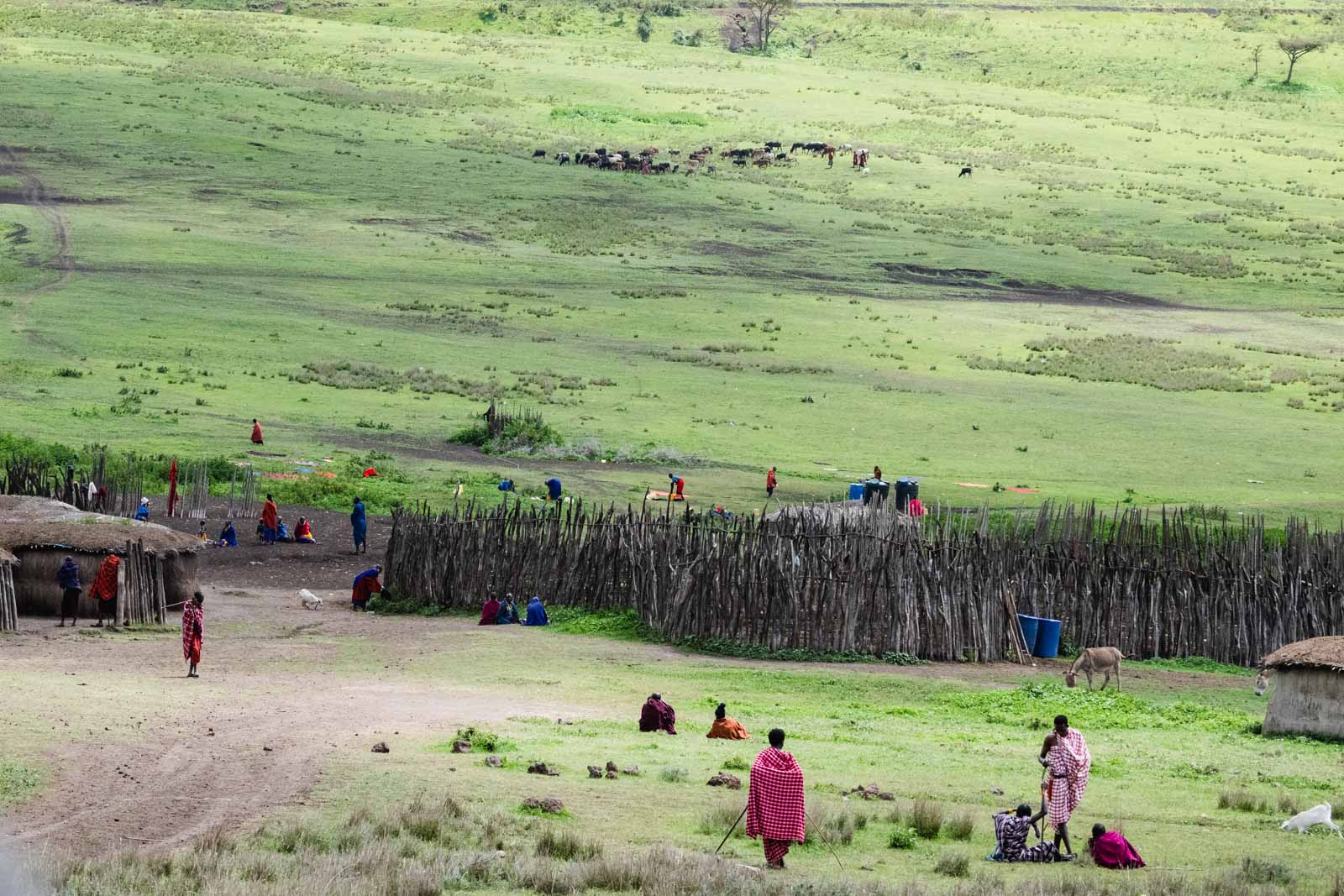
The people of the Maasai Tribe are semi-nomadic. They used to actually live in places like the Maasai Mara and Serengeti co-existing with wildlife. This could sometimes be quite a challenge with predators and the Maasai’s much-valued cows and goats. They need a vast amount of fertile land to graze their herds so are always on the move following the rains. Inevitably there were clashes with predators like lion, cheetah and leopard and the Maasai who needed to protect their valuable cattle. Once places like Serengeti were gazetted, the Maasai had no choice but to move outside these areas onto the fringes.
History of the Maasai
Originating from north Africa, the Maasai migrated southwards during the 15th century taking cattle from other tribes into the early 20th century. What followed was drought and disease which killed almost half of the Maasai tribe and their herds. Then they faced European settlers next.
A treaty signed with British settlers in 1911 resulted in the Maasai controversially losing the best of their land forcing them to relocate to less fertile land in Kenya and Tanzania.
Maasai are herders and their favoured animals are cows
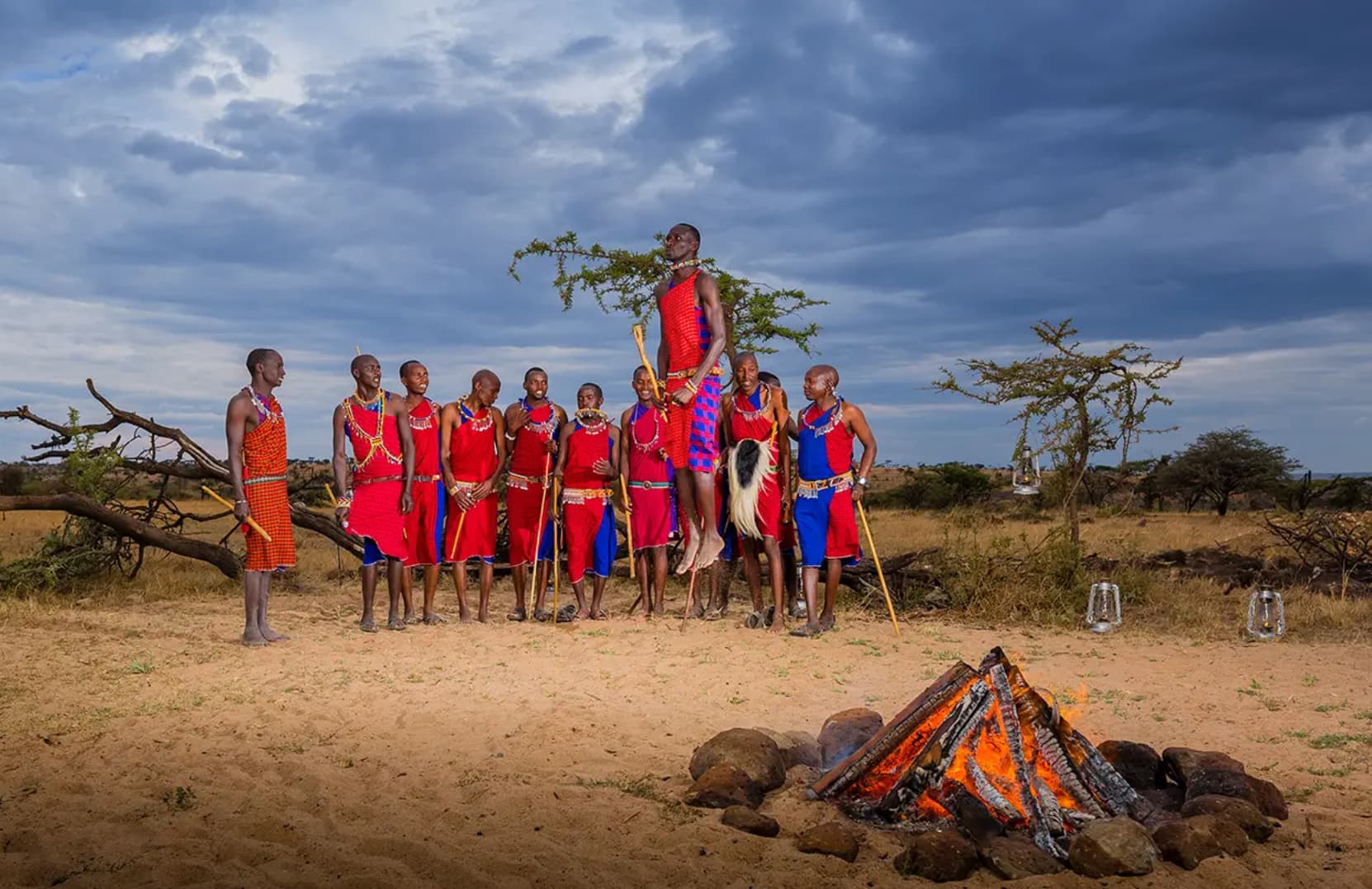
Cows are the Maasai’s most valuable possession so their lives revolve around their cows. It is a sign of wealth so the more cows a Maasai owns, the greater the status in Maasai society.
The Maasai pay for things with cows so it’s their currency. Exchanging cattle between a bride and groom’s family is a tradition and also marks the price of the bride. Wives are bought with cows.
The Maasai are the tallest people in Africa and very strong. This is due to their rich calcium diet.
The famous maasai jumping is known as ‘Adamu’ and carries a deeper meaning. The jumping demonstrates their strength and according to tradition is to attract their future bride. The higher the jump, the more attractive the Maasai warrior is to female Maasai.
People visiting Tanzania will usually see ‘Adamu’ at some point on their trip as it’s usually a part of entertainment for guests. Some guests eben get up and join in and realise how difficult it is to jump that high!
During the graduation of boys becoming a warrior,’Adamu’ is performed during a special ceremony called ‘Eunoto’.
Maasai Men can have multiple wives
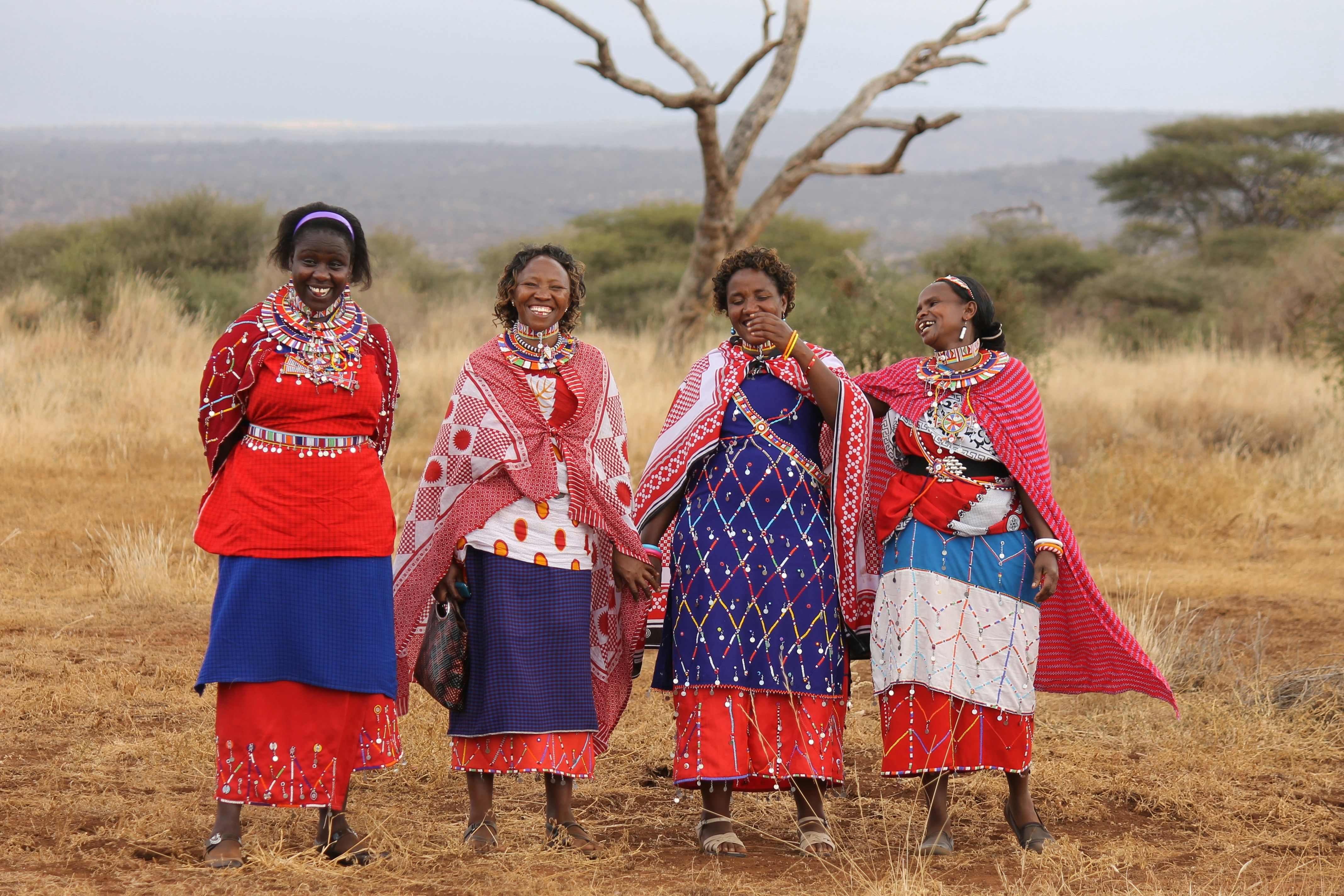
The number of cattle and children each Maasai owns is a measurement for wealth. So Maasai men can have as many wives as they want so they can get a lot of children. The more cows a Maasai has, the more wives he can afford and hence more children. Everything then expands as the children can help look after the herds and take over when the Maasai father gets old. It is each wife’s job to build her own house for her children within the village of her husband. There is also a hierarchy amongst the wives - the first wife holds the most value and power and her house is closest to their husband.
The women of each tribe are the main workers in terms of daily chores within the community. They fetch water and firewood, cook food, milk the cows and look after their homes while the men are herding the cattle. Within the tribe, the women are the minority. Women are not allowed to own cattle or land. Their father and later their husband will represent them by making tough decisions. And that’s not even the worst part for Maasai women. If they don’t get any sons within their marriage they are left alone with no money and no one to take care of them which seems harsh in this day and age.
Maasai warriors hunt lions
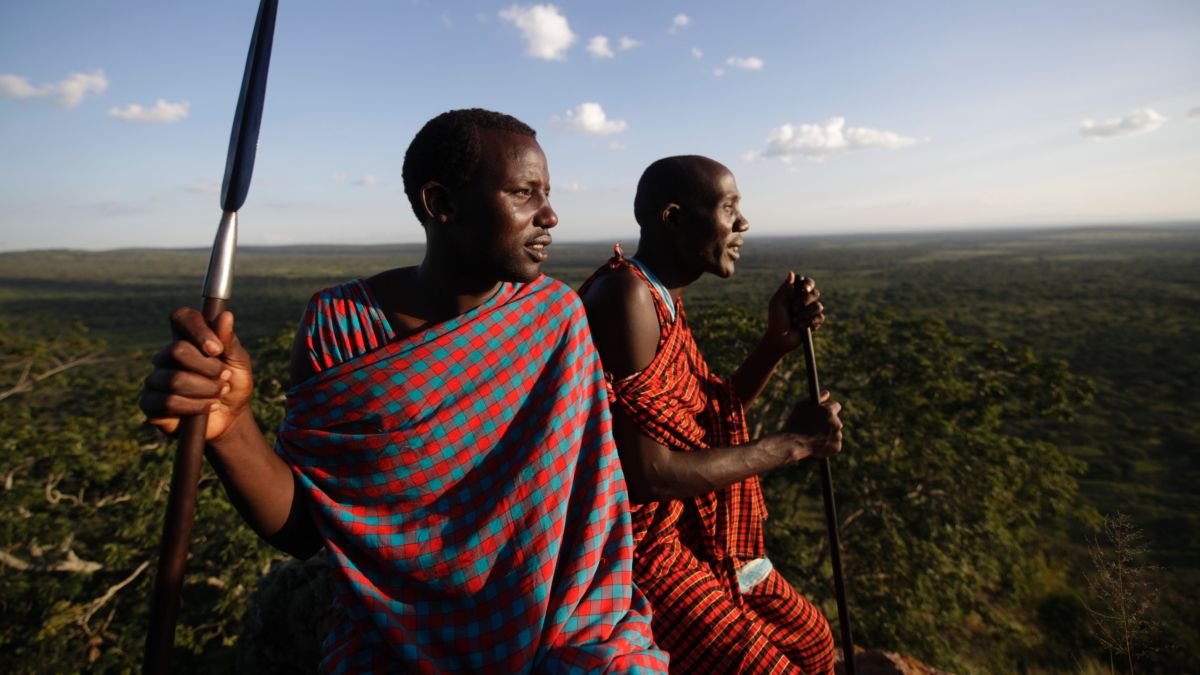
Unfortunately, the Maasai see lion hunting as the bravest thing to do as a warrior. Hunting the king of the jungle is a personal achievement and has been a tradition for a very long time. This is why places like the Serengeti were made into national parks and protected and the Maasai forced out. It was important to preserve the wildlife. The good news is that this tradition has been replaced since 2008 with a sports competition to prove manhood amongst the warriors. This is known as the Maasai Olympics and include traditional Maasai warrior skills, like running, hunting, cattle herding and also dancing. There are even cash prizes today.
The Maasai drink blood
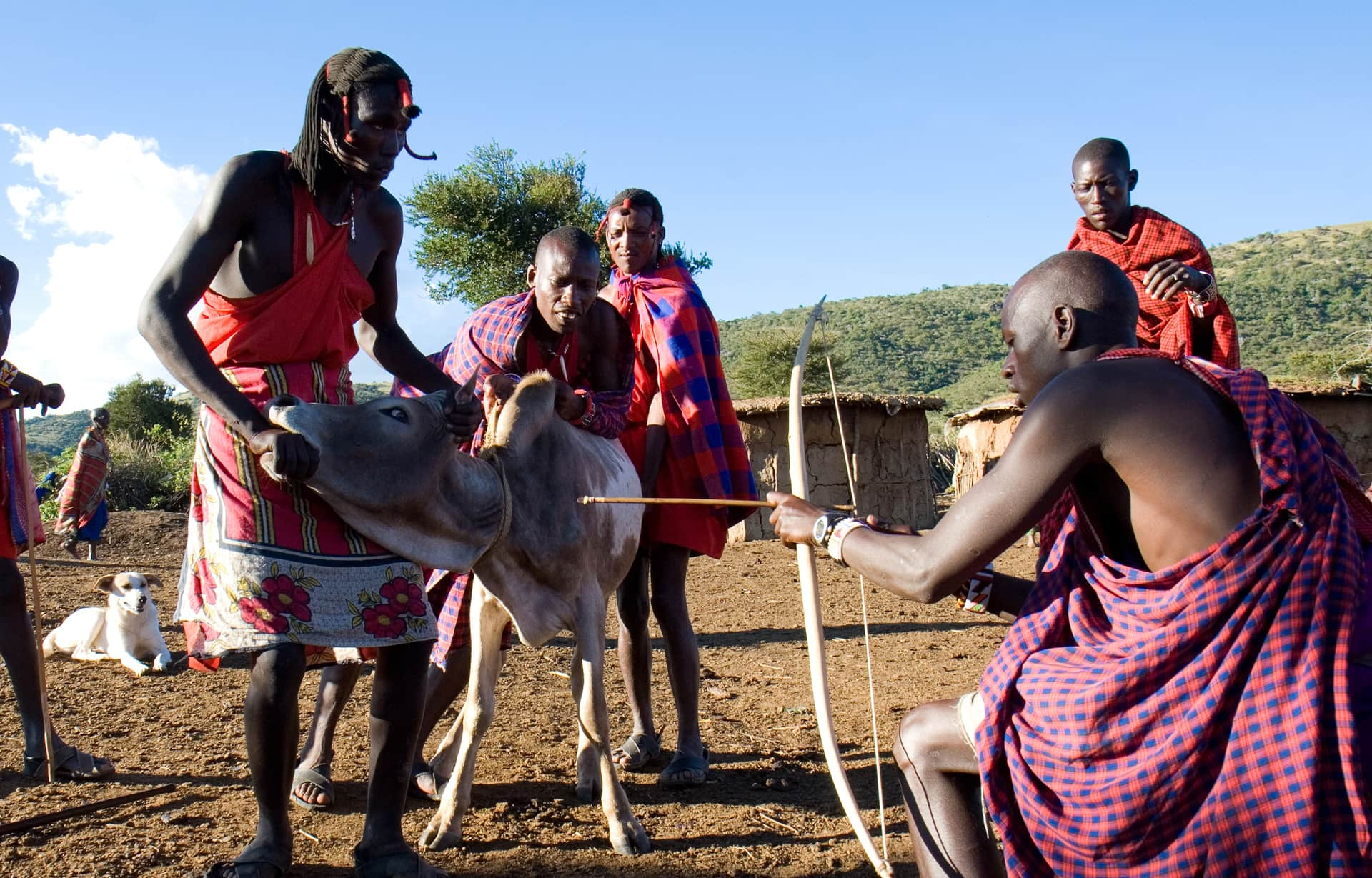
The diet of the Maasai is very simple; raw meat, raw milk and on special occasions they drink raw blood. Yes, cow blood. They drink it pure or mixed with milk during special ceremonies or when they are sick.
As cows are valuable to the Maasai, they don’t want to kill then to get the blood so instead they have learned how to precisely hit the jugular artery of a cow so enough blood comes out without killing the animal.
These days, many Maasai live an urban lifestyle working in hotels and tourism so they eat a more varied diet.
Maasai homes are made of cow poop
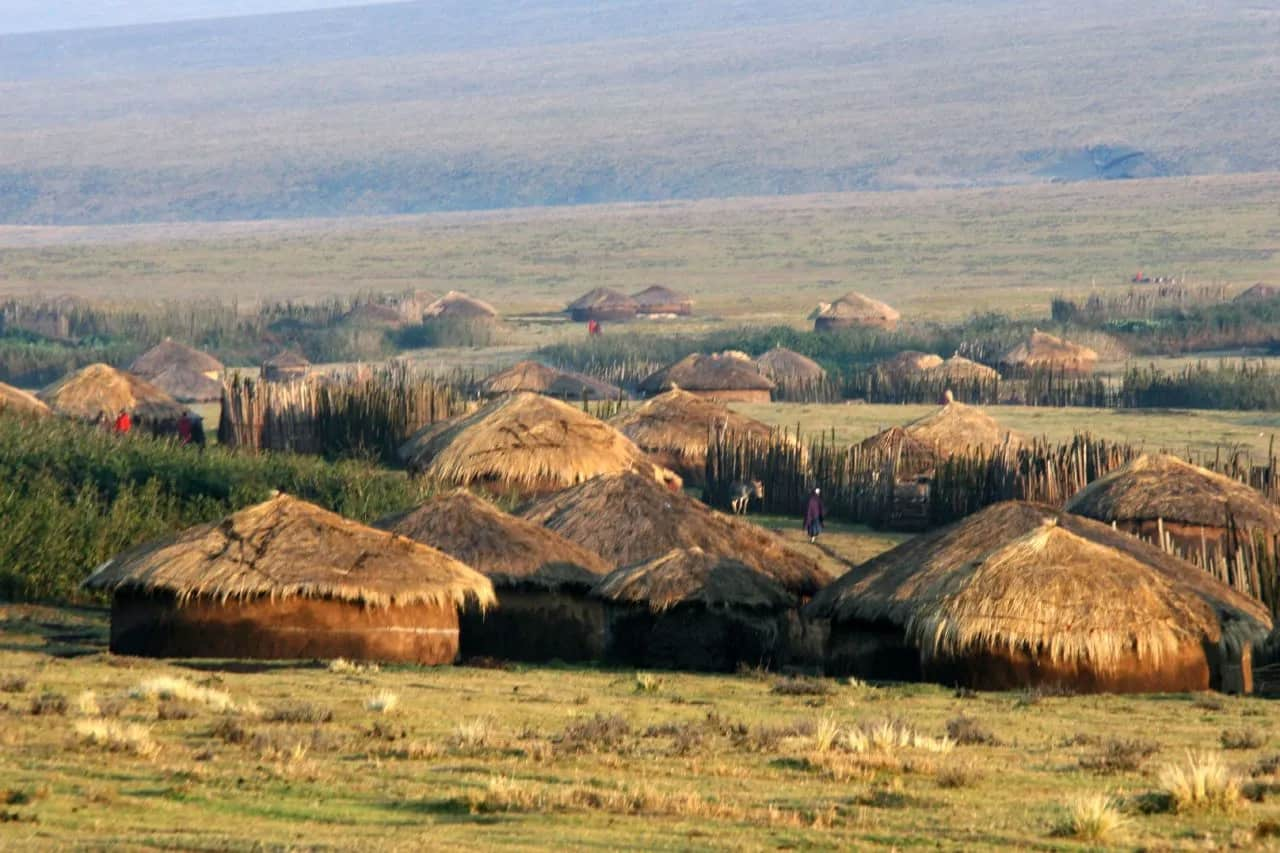
Maasai huts or ‘manyattas’ are semi-permanent. They settle in one place for a couple of months/ years, depending on the amount of food and water in the area. The women make the huts with mud, sticks, grass, ash and also cow dung and human urine. The cow dung is needed to make the roof waterproof!
The homes of the Maasai, also known as ‘Enkaj’ are very small. Only 1.5 m high and around 12 square meters. Within the hut, there is a fireplace for the mother to cook. It is also a place where the Maasai eat, sleep, socialise and store food and other possessions. Sometimes they keep small livestock within the huts to protect them from wildlife. The Maasai use the hides and skin of the slaughtered animals to sleep on.
The Maasai build their homes within kraals. It’s like a fence made of acacia thorns. A Maasai village can have multiple kraals. The cattle will stay in the inner kraal during the night-time to prevent lion and leopard attacks.
They are dressed in red cloths
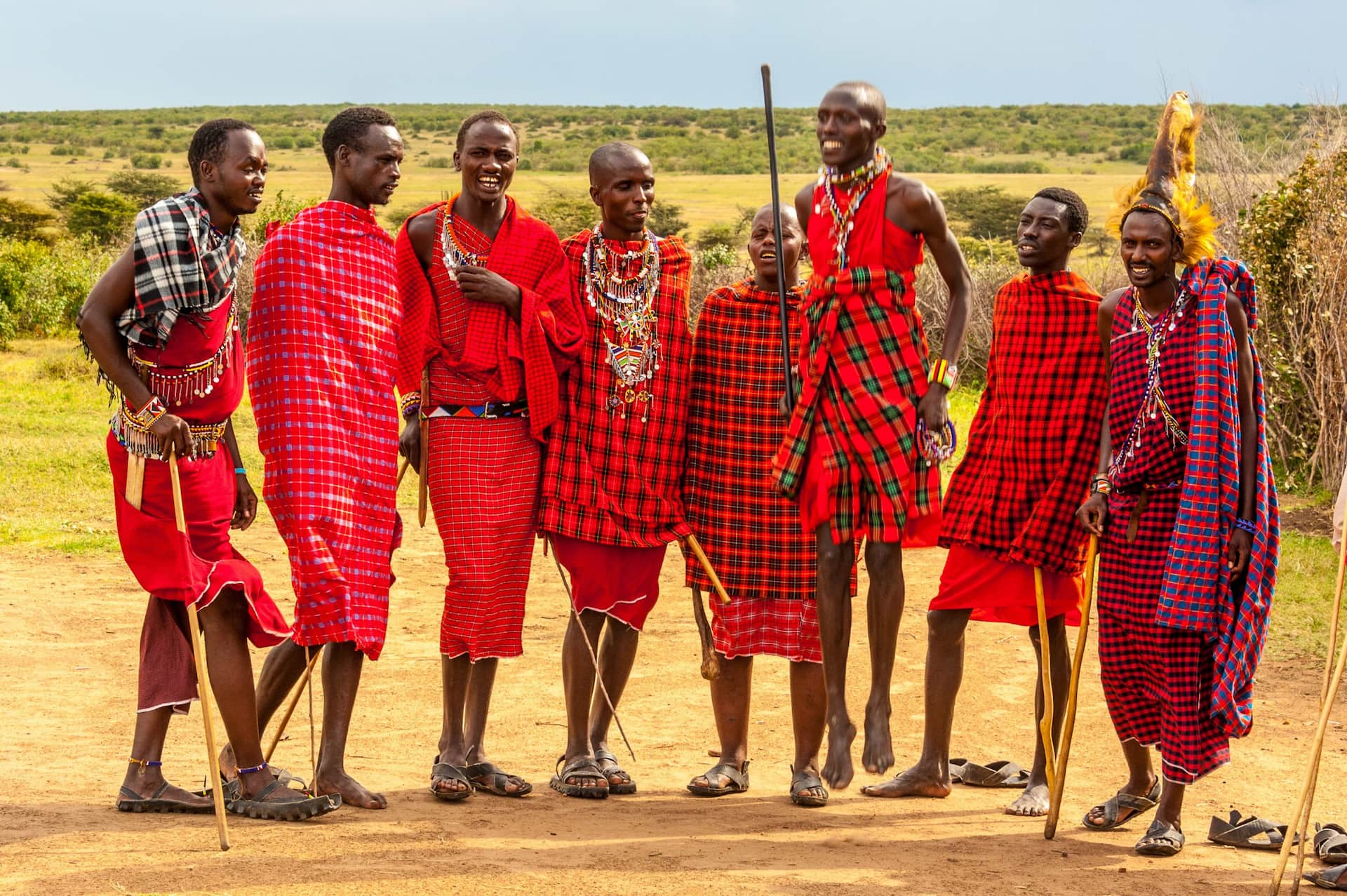
Everyone in the world recognises the Maasai through their red cloths or “shukas” and high jumps. Traditionally the Maasai dressed in animal skins but now they wear red cloths wrapped around their body. With also a great amount of beaded jewellery around their neck, arms and head. Today, there are lots of other coloured cloths or shukas worn by the Maasai but the most traditional colour is red.
The women shave their heads and are dressed in colourful clothing. They also pierce their ears and stretch their earlobes. Maasai jewellery plays a big part in their culture and also has meaning to it. Some general meanings for a few colours are; red = warrior/blood/bravery, white = peace, blue = water. Also, Maasai men can recognise a single lady or someone who is married by the way the women are dressed. And Warriors are the only members of the tribe to have long hair.
The Maasai language is Maa
The Maasai speak Maa. This language originates from the Nile region in northern Africa where the Maasai came from. The name Maasai comes from “one who speaks the Maa language”. Maasai are also educated in the official languages of Tanzania and Kenya which are Swahili and English.
Ngai is god
For the Maasai, Ngai is the creator of everything – their god. They believe that at the beginning of time Ngai was sky and earth together and owned the cattle that lived on it. It is believed that as one day the sky and earth got separated the Maasai believe that Ngai was no longer on earth and sent the Maasai to earth to prevent the cattle from dying.
Being a warrior is of great importance
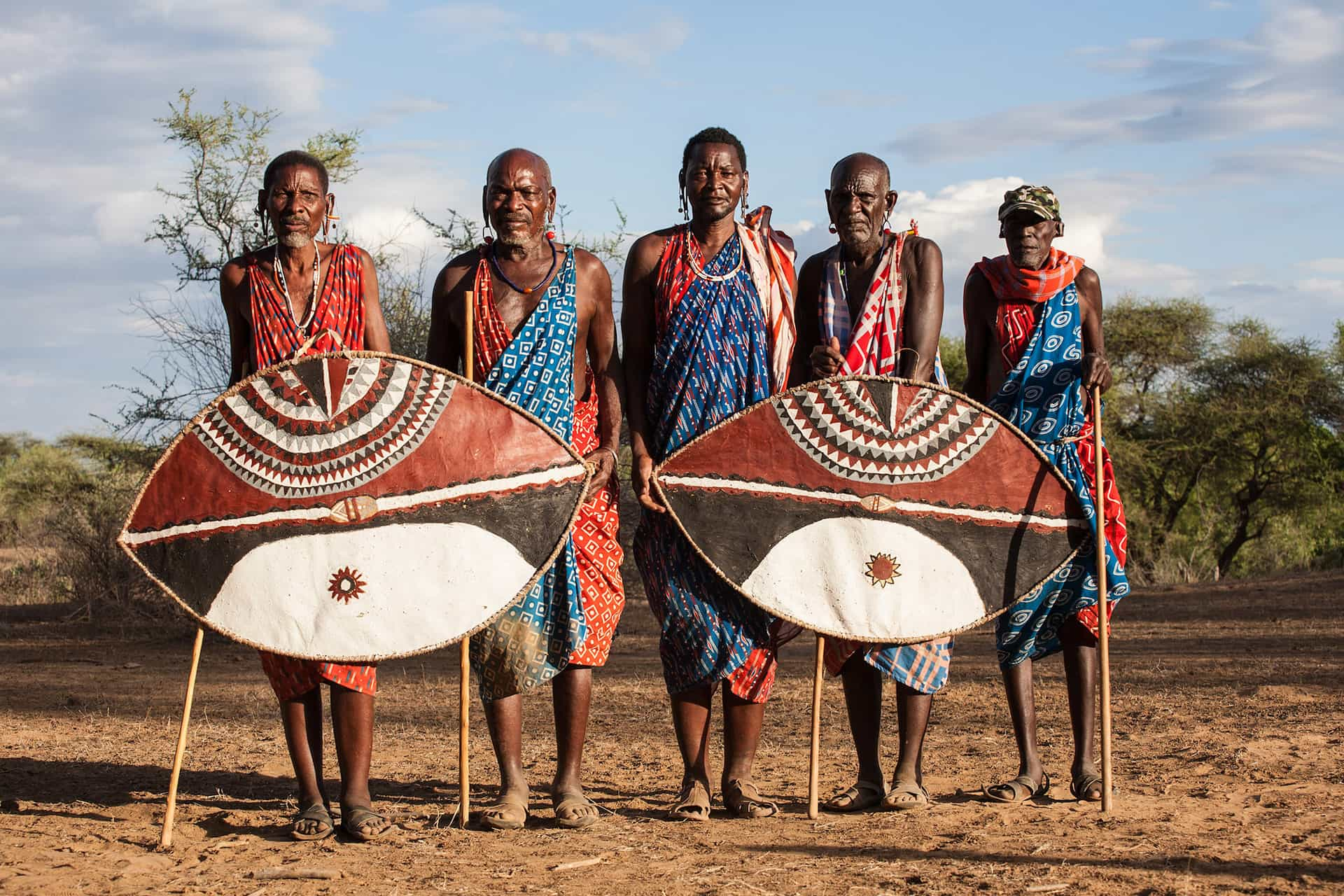
The ultimate goal in life for young Maasai boys is to become a warrior. From a very young age, boys are trained to become a great warrior and an excellent herder. Big and brave warriors who have earned their respect are celebrated throughout their lives.
The Maasai culture works with age-set rules. Each age group has a certain role within the community. For men, the Maasai have four age groups; junior warriors, senior warriors, junior elders and senior elders. Maasai women have no age-group. They automatically fall into the age group of their husband.
Boys learn to herd cattle at the age of 6 and 7. At 14, they go through rituals and ceremonies to become a junior warrior and this includes circumcision. The ‘Eunoto’ ceremony is where a large group of Maasai boys within the same age group get circumcised and become young warriors. Once they become warriors they can settle down, start a family and collect cattle. Through every age-group, the Maasai men learn different aspects of the traditions and rituals so they can pass it on to the next generation.
For those guests visiting A Tent with a View’s Sable Mountain Lodge in Nyerere national park (formerly Selous Game Reserve), there is the opportunity to visit the family of Saita, long-term friend of A Tent with a View. Saita has been chief of his village for many years now. Guests can meet Saita and his family and learn about the Maasai way of life. It’s a fascinating and non-commercial experience and hence, one we value highly. At the end of the visit, the ladies bring out beautiful Maasai beaded jewellery and other hand-made crafts to for people to buy if they wish.
This Maasai cultural experience is part of our Secret Southern Tanzania Selous & Saadani safari.
